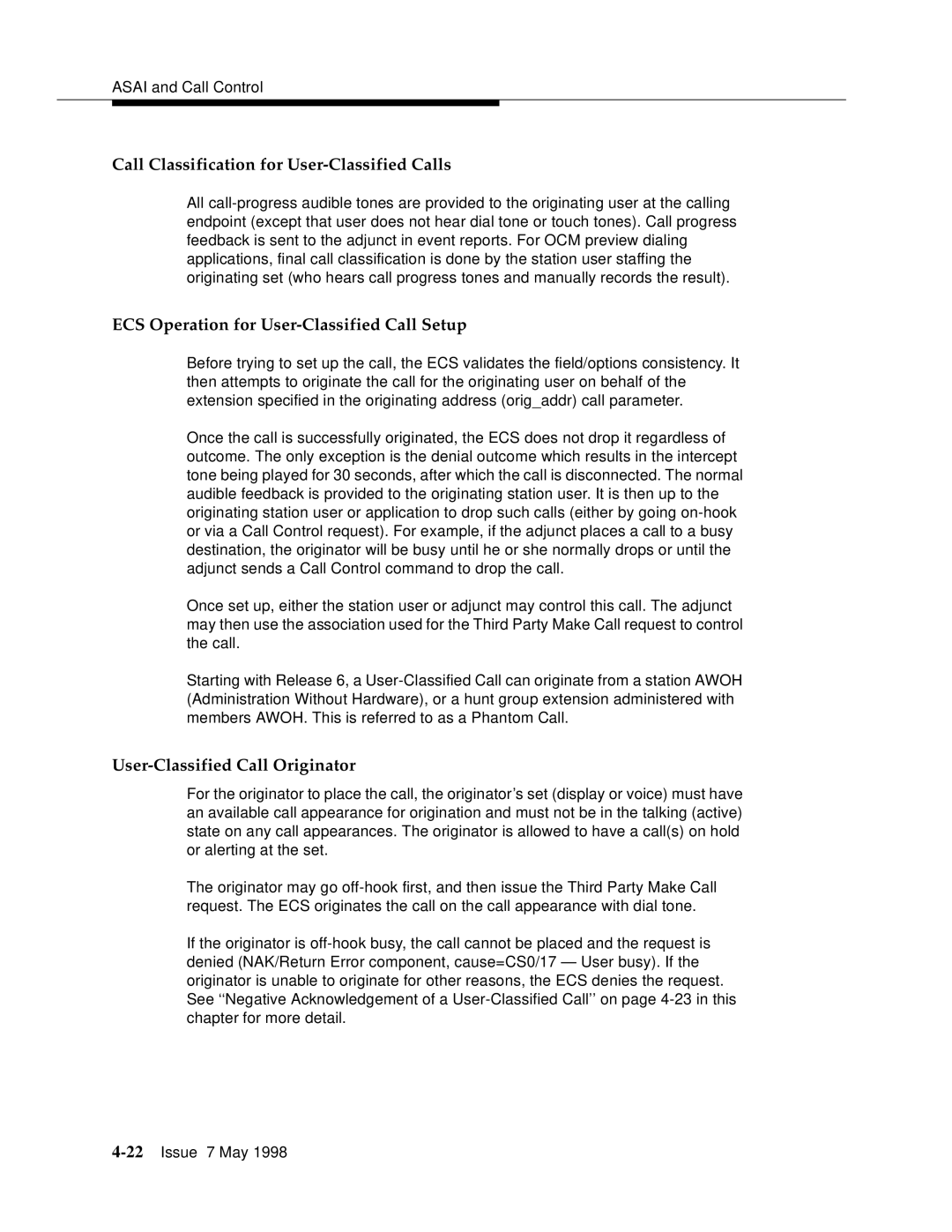ASAI and Call Control
Call Classification for User-Classified Calls
All
ECS Operation for User-Classified Call Setup
Before trying to set up the call, the ECS validates the field/options consistency. It then attempts to originate the call for the originating user on behalf of the extension specified in the originating address (orig_addr) call parameter.
Once the call is successfully originated, the ECS does not drop it regardless of outcome. The only exception is the denial outcome which results in the intercept tone being played for 30 seconds, after which the call is disconnected. The normal audible feedback is provided to the originating station user. It is then up to the originating station user or application to drop such calls (either by going
Once set up, either the station user or adjunct may control this call. The adjunct may then use the association used for the Third Party Make Call request to control the call.
Starting with Release 6, a
User-Classified Call Originator
For the originator to place the call, the originator’s set (display or voice) must have an available call appearance for origination and must not be in the talking (active) state on any call appearances. The originator is allowed to have a call(s) on hold or alerting at the set.
The originator may go
If the originator is
